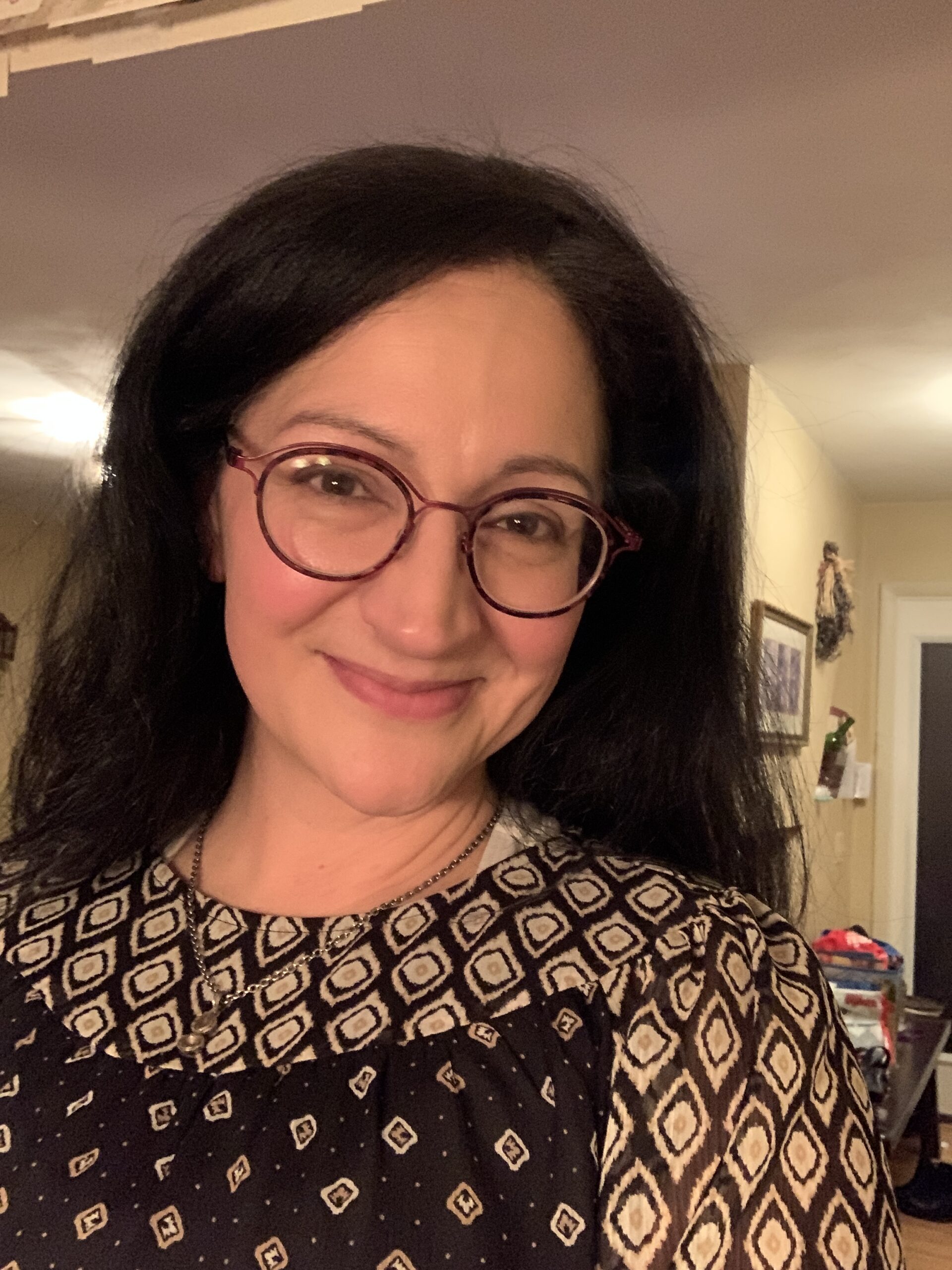That Time Jane Friedman’s Advice Saved My Novel
By Therese Walsh | September 4, 2018 |
 Today marks the paperback and audiobook release for The Moon Sisters–a book that earned some critical acclaim, but not before nearly dying on the vine, pre-publication. Below is one story behind the story, complete with rising stakes, a ticking clock, a dark moment, and a turning point.
Today marks the paperback and audiobook release for The Moon Sisters–a book that earned some critical acclaim, but not before nearly dying on the vine, pre-publication. Below is one story behind the story, complete with rising stakes, a ticking clock, a dark moment, and a turning point.
THE SETUP
I had been working on The Moon Sisters for ~4 years, as the publishing ground shifted radically beneath me. The imprint at Random House that had signed me to a 2-book deal had been shuttered, and I had been shuttled to an imprint about to change its mission statement. My original editor was with a different house. My 2nd editor, too, left for a different house. My 3rd editor also left, after providing me with comprehensive editorial notes about a year prior to the start of this tale. My 4th editor, therefore, inherited the story, its old editorial letter, its revision, and its somewhat rattled author.
This is where the story starts.
A WRITER’S GOAL, MOTIVATION & CONFLICT
I received notes from Editor #4 in early March, wherein she kindly acknowledged how far the story had come with regard to Editor #3’s notes, and roundly encouraged the story in many heartening ways. But some important issues remained for her, and as I worked through the letter, I homed in on one gigantic problem:
Editor #4 was not onboard with the PREMISE of the novel, which was, briefly, “Two sisters travel to a cranberry bog in West Virginia to find the end of their recently deceased mother’s unfinished novel.”
Her clarified point, Why should readers care if the sisters get to the bog and meet their goal?, was hard to hear, because I cared about my protagonists and understood their dreams. They were worth caring about.
My goal became to find the proof of it.
RISING TENSION, A TICKING CLOCK & A DARK MOMENT
We all have strengths and weaknesses, as writers and as people. Something I consider a personal strength is being an ‘ideas person.’ I can mentally slide everything onto the bubble, then experiment to see how one aspect or another of my story might be reimagined. I don’t shy away from revisions if they are needed; I completely rewrote my first novel in another genre, for instance, before it sold. But every time I considered a new spin for the premise of this story and visualized how that spin would play out through the end of the book, the narative fell apart at some crucial moment.
Weeks passed, and still I had no workable solution to this problem. Meanwhile, the tick-tick-tick of the clock began to haunt me. I had through July to send in the next draft, and my deadline had already been pushed once. I had to find a solution, and leave myself enough time to execute it. But as night set on one solution-less day after another, a sickening possibility took hold: There may not be a solution, and the book might never be published.
AN IRONIC ASIDE
Maybe you’re thinking, “How ironic! The story is about finding the end of this dead author’s story, and this author thought she was going to die trying to figure out how to save her own story.” Mmhmm. The Moon Sisters is, at root, a story about a journey to preserve hope, which takes the form of light. Sunlight, a pilot light, the flickering light of a will-o’-the-wisp, even the flavor of hope for one of the Moon sisters, who is a synesthete. You could say this was a personal dark moment for me as a writer, when my own hope light all but flickered out.
But it didn’t.
A TURNING POINT
In looking for a solution, I not only excavated my imagination. I looked through books, old articles, and more, as I paced a ditch into my living room floor. One night, I stilled long enough to read something that Jane Friedman shared over her Twitter account: a link to a series of slides from a conference session she’d led that might be helpful to writers. Below is the slide that snagged my attention.

I took a screenshot, and resumed pacing. Biggest BAD advice is to start with action, huh? Chapter one, scene one did start with action–with one sister, newly blinded from staring at the sun, beginning to walk to the bog her mother had always meant to visit, which was the setting of her unfinished novel.
But we don’t care, and we need to, came the haunting memory of my editor’s note.
The action should have context–and be as grounded as possible in a character that we’re already starting to love, nudged that second bullet point on Jane’s slide, which was revealed as the GOOD advice to counter the potentially BAD advice seen in that first bullet point.
It struck me that though we learn throughout the course of the story why this trip is so important to my protagonist, context is not in place to support the start of the action. I was essentially asking readers to trust that all would come clear in due time, to care because I cared, to believe my protagonist was lovable without any show of it and without giving them anything else to hold onto.
A HAPPY ENDING
I slept on it, and woke with a different, viable path for the flight of my story’s arrow. I could pull the bowstring further back and draw power from something that had only existed as backstory but that didn’t have to be backstory. I could show the last time my protagonist saw her mother alive, the moment that broke her hope and seeded the desperate need to find it again. Ground zero, a few months earlier. If that didn’t make readers care about Olivia Moon and clarify her desire to travel to the bog, nothing would. Because it was a possibly foolish quest. That was always (part of) the point.
I wrote that new chapter in a day, then sent it to my editor, and held my breath. We spoke on the phone a few hours later. That was it, she said–the answer, the key, the strong start the book required. The story felt “so much more immediate,” and more important. Olivia felt much more real, not only to my editor but, surprisingly, to me. The change in setup had cast everything into a clarifying light (hello, theme), and that made everything click.
I met my deadline. The book was published, and received two starred reviews, and then this happened: a ‘best five women’s fiction novels of the year’ nod from Library Journal, and then another such nod from Book Riot.
For a book that nearly wasn’t.
[Insert triumphant photo capture because it IS book release day, and four other novels also had this honor…]
 LESSONS LEARNED
LESSONS LEARNED
This book delivered plenty of lessons for me, but here are six I’d like to pass along:
- When considering where to start your story, do think beyond the external story and trajectory of the plot. Think about your protagonist’s internal arc, and the inciting incident for that, too, because therein lies the story’s heart, and that is what will make people care.
- Realize that while you, as story god over your novel, know why your protagonist is worthy of empathy, your readers may not tolerate hunting for the proof of that if it’s scattered throughout your book like breadcrumbs. Some tales–like a story about another person’s lost hope–may need more authorial effort, with a more deeply planted seed, and early exposure of the roots, in order to work.
- Listen to your gut, but also to the wise voices around you. My editor was one of those voices; she was exceptionally wise to realize a key weakness that neither I nor the editors before her could see.
- Follow Jane on Twitter. :-)
- Don’t give up hope, but don’t rely solely on hope, either, because life can be as unpredictable as the publishing industry and as absurd as looking for the end of an unfinished novel on a West Virginia bog.
- Fight, work, and write on.
Have any of you read exactly the right advice, exactly when you needed to read it? What was it that saved your novel/chapter/character? Who are the real-life heroes that have helped you along the way?
If you’re curious about the scene that saved my book, you can listen to it just below–via a preview from the audiobook releasing today–or read a longer preview, which includes an additional two chapters, on my website. (The chapter entitled, “The Foolish Fire of Olivia Moon” was once the story’s start.)










I too would have yawned about searching a cranberry bog for the end of an unfinished novel. A body, perhaps, but a novel? Nuh-unh. The revised beginning sounds a whole lot more powerful.
Meanwhile, while looking for The Moon Sisters, I am struck by the image of pulling the bowstring further back to draw power for the story’s trajectory. Also, I can use all six of your lessons learned in my nonfiction WIP, especially the first. Thanks!
It’s funny how obvious it seems to me now, but back then we were (almost) all blind to it. Pun intended.
Good luck with your WIP, Anna; I’m glad the tips can help you.
Kudos to your editor for identifying what your story needed and to you for making it happen. But I can’t help but think that even that sage advice for the opening to be grounded in a character that we’re already starting to love does not apply across the board. I’m reading “Beartown” by Fredrik Backman (author of “A Man Called Ove”). This is the entire chapter 1: “Late one evening toward the end of March, a teenager picked up a double-barreled shotgun, walked into the forest, put the gun to someone else’s forehead, and pulled the trigger. This is the story of how we got there.”
To my mind, this is pure action, no context, no prior investment in the characters, but it certainly made me want to read on. Thoughts?
This is a great question, Densie. For me, the immediate drama of your example with its clear stakes pulls me in. That is not present in a book that seems, at the surface, to be about a whimsical quest. (It isn’t — it’s about as critical as anything could be for this family — but that’s how it seemed.)
Not every book will need this. But maybe books that are more internal need to take special care to show some heart earlier than others.
I’ll see if I can nudge Jane in this direction, and see if she has the time to comment, too.
I also keep feeling like what that book did is a bit of a cheat, as it throws you into a later moment. How does chapter 2 begin?
Another bit of a cheat. It begins, “Bang, bang, bang, bang, bang.” Of course, you think it’s a gun, but it’s a hockey puck banging against the wall. I’m 3/4 of the way through and I still don’t know who pulled the gun on who. It’s a super-slow, emotional build-up via all the characters. Sort of the opposite of the first chapter.
I don’t want to take anything away from this author, but I do wonder if I wise editor said, “We need some immediacy on the first page. What about a two-sentence first chapter to let folks know there are some serious stakes in this novel?” Or maybe the author knows Jane Friedman. ;-)
Indeed, it doesn’t apply across the board, and all types of writing “rules” (or prescriptives) are meant to be broken. My advice at that time ran counter to the overriding philosophy I heard continually, “Start with action” (arguably still popular).
“Start with action” can cause more problems than it solves, as it tends to inspire car crashes, deaths, and other forms of dramatic physicality (often cliche, I might add). But I understand why this advice is repeated: too many new writers begin a story with a character, alone, ruminating over past events while getting up in the morning or walking on the beach or sitting in a rocking chair or whatever. And we wonder when the story will actually go somewhere – when something will “happen.”
For me, a great opening offers a distinct voice, POV, or personality, with some seeds of tension. That can be accomplished in myriad ways.
Great advice — again. Thank you, Jane!
I’m so glad to read confirmation that an alternate approach to beginnings is possible. I have a wonderful critique group, but one member (who is a wonderful writer, great critiquer, and former lawyer) always “goes by the book.” It’s worked for him, but being continually told that person x recommends this and the “rules” say that sometimes gets to me. If I haven’t done a good job (rules or no rules), then better stick to the rules for a while, but they aren’t everything and the books I admire most are generally the books that break rules more often than not. As always, great advice.
Aline, what’s the saying? First you learn the rules, and then you break them? Coloring outside of the lines was always more fun that staying within them, at any rate.
So now your blog is perfect timing for me. I guess that’s called “pay it forward!” TY
Very glad to hear this, Anne! Write on.
Great post — I love reading the story behind the story. I for one think the concept of finding a novel-ending in a cranberry bog is fascinating… but I also love the new beginning. I also thank you for your six lessons, very helpful!.
Thank you, Julia! As a reader, I respond to voice and unique situations more than immediate action. It’s work to remember that not everyone looks for the same thing to invite them into a book. All lessons being applied now to the WIP…
I’m in tears over here, because your advice (and sharing the struggles you had on a book I loved so dearly) might have just been the thing to save my novel.
Thank you.
Tasha, what a wonderful thing! I’m thrilled to know that this is helpful for you and your story. Write on.
“I could pull the bowstring further back and draw power from something that had only existed as backstory but that didn’t have to be backstory.”
Hmmm – Why does this sound so familiar? Oh yeah. Because a very wise Storywhisperer once advised me to do the exact same thing. And oh-how-well it worked. As an aside (for those thinking of checking the draw of their own storytelling bowstring), it doesn’t always require a full chapter, or even a full scene. In my case, it was about a page and a half of new, “pre-action” prose and dialog. But it made an admittedly bewildering plunge (ala Densie’s Backman example) into an understandable and (hopefully) more relateable course into the story.
So glad for the wisdom the Storywhisperer in question had already gained. And I’m delighted by the reemergence and new incarnation of one of my all-time favorite stories. I love Julia’s take on Olivia!
Thanks for these sage takeaways, and for your ongoing inspiration and support, T. Wishing you the best with the release!
Thank you, V! I’m glad to have been able to pay it forward. But now you see where that wisdom really came from: Jane. :-)
Love this, Therese. I just went back and reread The Moon Sisters opening, Olivia. I can’t imagine the story without it. Thank you for sharing the background journey of finding the perfect opening.
I hate first chapters. *sigh* I’m struggling to find that right way into my story, and walking furrows into the floor as well.
Thank you for sharing “pulling back the bow” and the breadcrumbs through the story waiting for the reader to find them. I’m going to ponder this, and reread it many times..
And thank you for The Moon Sisters.. It’s on my keeper shelf.
Thank you, Deb! Openings get me every time, too. Going right to ‘the deepest pain’ can sometimes crack the story wide open. Good luck!
Thank you, Therese and Jane!
Wonderful that you received the exact help you needed to finish/begin your novel! And thanks to Jane for her excellent advice.
Congratulations Therese! It’s always wonderful to read how a story evolves, the struggles, and eventual triumph.
“I could pull the bowstring further back and draw power from something that had only existed as backstory but that didn’t have to be backstory.” This advice came to me also at a most opportune time and I love how poetic it is as well, how it gives more oomph to the trajectory.
Thank you, Vijaya! I’m glad the story found you on the right day.
Congratulations on the audiobook and paperback release day!
I found your post very interesting because, on both of the novels I’ve written, once I’d finished the story I’ve had to return to the beginning and add a chapter or two. Of course I haven’t ever figured the need out myself. I can thank my astute editing friends who have suggested the addition–and it always makes the beginning flow better. What I learned by reading your post today is why!
Now I’m wondering if the same need for character connection at the beginning of a story (or my lack of having such a beginning) may be why my short stories often come off as vignettes instead of stories. I’m going to have to write something and try it out. :)
I hope your release day was awesome!
Lara, that’s fascinating about the short stories v. vignettes. I hope you’ll circle back later to let us know what you discovered! And glad the post was illuminating for you. Thanks, too, for the congrats!
Ooo, how I love lessons, and Mama Tee shared FIVE. Oh yeah, that’s what I’m talking about.
When are you coming to WU to write a post, BB? I want to hear your lessons.
Not only do you wtite well, but you know how to explain your dilemma and how you fixed it. I’m on the fifth book in my series, and i just tealized that i was having a difficult time caring whether my antagonist lives or dies or falls in love. And while reading your blog, it struck me. The first scene in my book doesn’t endear her to anybody, nor does it draw anyone in.
You’ve shown me my solutuon!!! I’m now just itching to “pull back” my bow and let my readers connect with a scene from her past in a way that they (and I) can sympathize with her plight from the very beginning.
Thank you. I’ve read a few articles looking for practical help, but yours hit home.
Marty, I’m glad that hit home for you! Good luck with that bow, and book #5.
Congratulations on the release day, and thanks for sharing your way out of your writing dilemma.
Starting a story with action can, and does, work for some genre fiction. I particularly like a mystery that starts with a bang, so to speak. LOL But I can see where starting other stories with something to make the reader care about the protagonist. I got that good advice from Kathryn Craft when I hired her to help me as I struggled to write Evelyn Evolving, a book I based on my mother’s life. Kathryn kept telling me that I had to make Evelyn a person that readers outside of my immediate family would care about. With Kathryn’s help through two revisions, I think I accomplished that.
Thanks, Maryann! Family stories can be especially challenging. We may not want to dig into the raw wounds and conflict that can make a story sing, and we may want to tell the old family stories that may be better left with the flies at the family picnic. :-) It sounds like you were in great hands with Kathryn.
The top bullet in LESSONS is priceless for me! Thanks, Therese! A terrific article.
I’m so glad that was useful to you, friend!